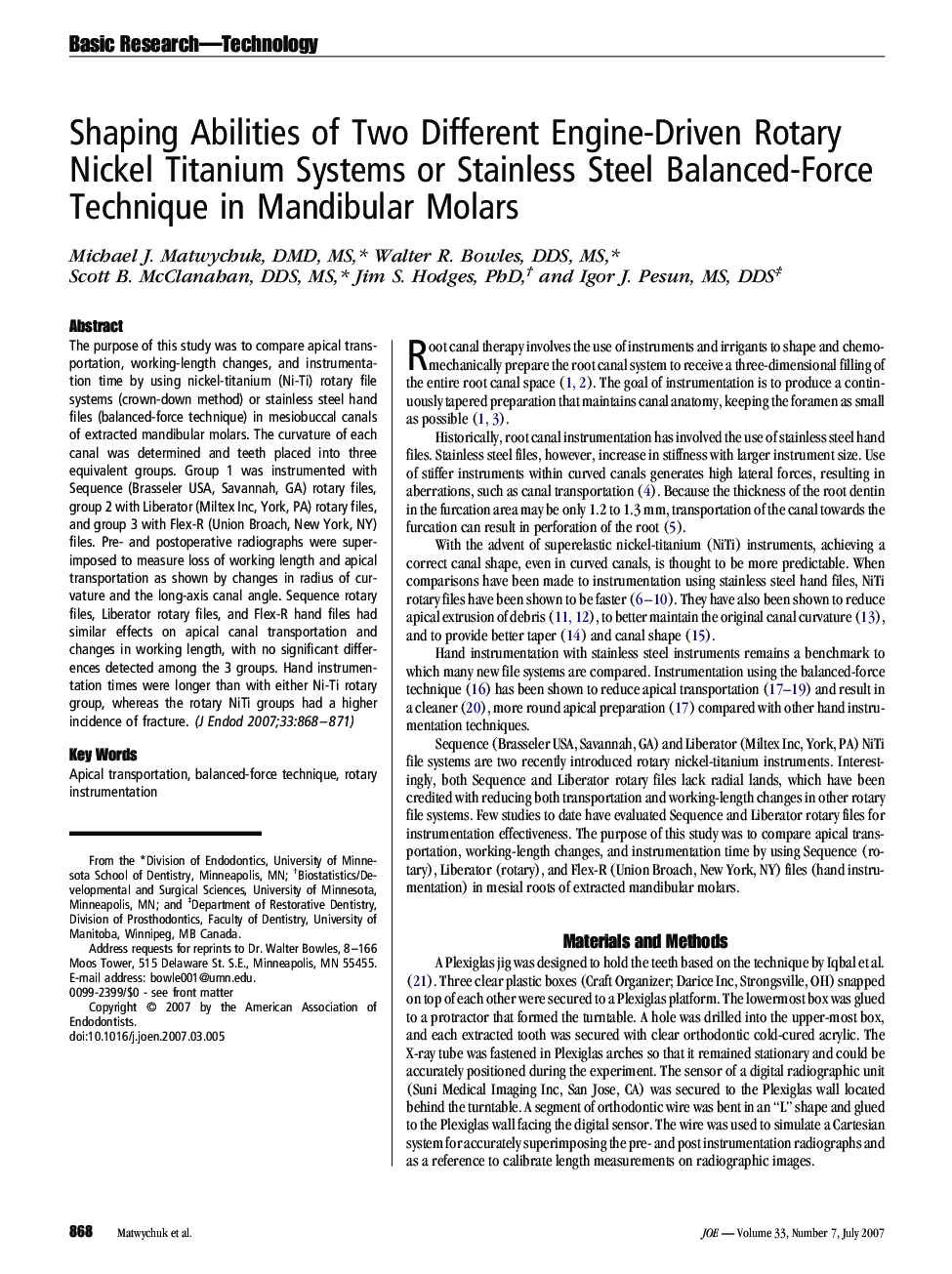| Article ID | Journal | Published Year | Pages | File Type |
|---|---|---|---|---|
| 3149026 | Journal of Endodontics | 2007 | 4 Pages |
Abstract
The purpose of this study was to compare apical transportation, working-length changes, and instrumentation time by using nickel-titanium (Ni-Ti) rotary file systems (crown-down method) or stainless steel hand files (balanced-force technique) in mesiobuccal canals of extracted mandibular molars. The curvature of each canal was determined and teeth placed into three equivalent groups. Group 1 was instrumented with Sequence (Brasseler USA, Savannah, GA) rotary files, group 2 with Liberator (Miltex Inc, York, PA) rotary files, and group 3 with Flex-R (Union Broach, New York, NY) files. Pre- and postoperative radiographs were superimposed to measure loss of working length and apical transportation as shown by changes in radius of curvature and the long-axis canal angle. Sequence rotary files, Liberator rotary files, and Flex-R hand files had similar effects on apical canal transportation and changes in working length, with no significant differences detected among the 3 groups. Hand instrumentation times were longer than with either Ni-Ti rotary group, whereas the rotary NiTi groups had a higher incidence of fracture.
Related Topics
Health Sciences
Medicine and Dentistry
Dentistry, Oral Surgery and Medicine
Authors
Michael J. DMD, MS, Walter R. DDS, MS, Scott B. DDS, MS, Jim S. PhD, Igor J. MS, DDS,
